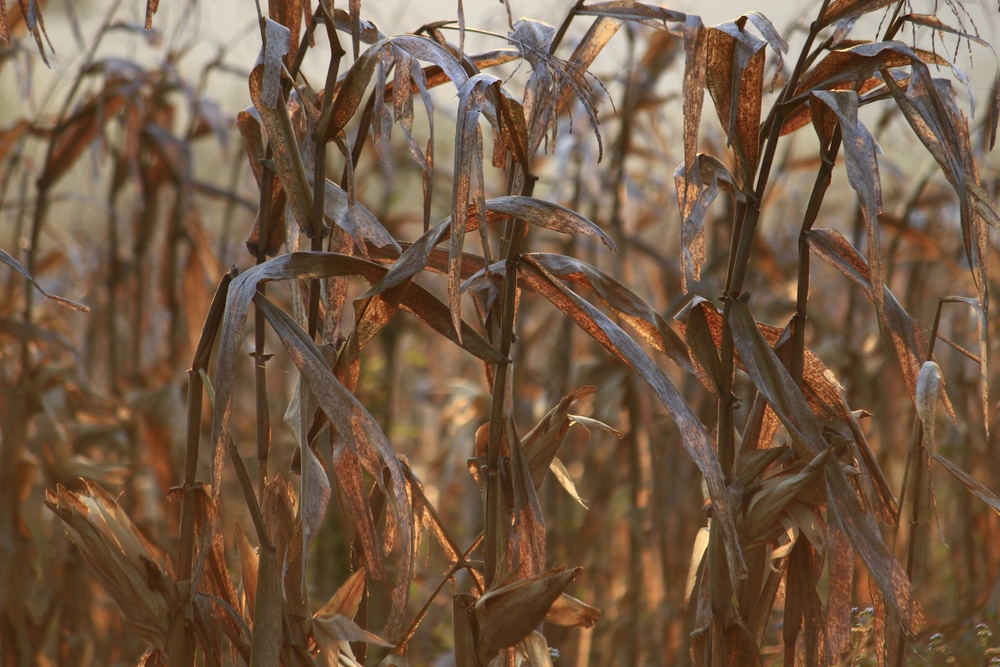(OPINION) I honestly did not know that things were this bad. Severe drought is crippling winter wheat production in the middle of the country, agricultural production in many areas of California is being hit extremely hard by unprecedented flooding, and orange production in Florida is down more than 60 percent from last season due to a combination of factors.
Of course, this comes at a time when the entire world is dealing with a major food crisis. As I discussed in a previous article, even CNN is admitting that we are currently in the midst of “the worst food crisis in modern history”.
So this is a year when we need U.S. food production to be very strong, and that simply is not happening. No state produces more winter wheat than Kansas does, and right now less than 20 percent of the winter wheat in the state “is in good to excellent condition”…
Less than 20 percent of Kansas winter wheat is in good to excellent condition. The U.S. Drought Monitor says only 15 percent of Kansas’ acres are not experiencing any level of drought stress. More than 36 percent of the state reported D4 exceptional drought compared to just a little over one percent last year. D3 extreme drought conditions are hurting 16 percent of the state, with D2 severe drought hitting 13 percent of Kansas.
Unfortunately, the winter wheat in other crucial states is also greatly suffering due to seemingly endless drought conditions… Colorado winter wheat was rated 27% good to excellent and 33% very poor to poor. Oklahoma’s and Texas’ crops were rated at 26% and 18% good to excellent, and 40% and 47% very poor to poor, respectively, he said.
This is really bad news. Wheat prices just continue to escalate, and that is especially true for hard-red winter wheat…
The spread between hard-red winter wheat and soft-red winter wheat has blown out to a record high as drought threatens crop yields across the Midwest and other major farming regions. Hard-red winter wheat’s premium over soft-red winter wheat is $1.72 a bushel in Chicago on Tuesday morning, surpassing the 2011 record.
Meanwhile, the outlook for spring wheat is not particularly promising, because U.S. farmers have planted the smallest amount of spring wheat since 1972. Out on the west coast, too much water is the problem. In fact, 78 trillion gallons of water has fallen on the state of California in recent months…
More than a dozen powerful storms later, 78 trillion gallons of water has been dumped on California, reversing a multi-year drought in a matter of months. Now the agricultural powerhouse state, producing about a third of the country’s vegetables and three-quarters of its fruits and nuts, faces planting delays due to washed-out fields.
When it comes to fruit and vegetable production, no other state even comes close to California, and so we should be greatly alarmed that farms all over the state look like swamps at this moment.
And this is just the beginning. The mountains in California are absolutely teeming with unprecedented amounts of snow right now, and when it all starts melting all of that water is going to have to go somewhere…
California’s snowpack levels varied by region, with the Southern Sierra snowpack reaching 300% of its April 1 average and the Central Sierra reaching 237% of its April 1 average, officials said. And the critical Northern Sierra, home to the state’s largest surface water reservoirs, is at 192% of its April 1 average.
On the east coast, the big news is what has happened to Florida orange production. At this point, it is down a whopping 60.7 percent from last year… Orange production in Florida is down 60.7 percent from last season, one of the lowest figures since the 1930s, according to US Department of Agriculture estimates. This drop in production has been caused by citrus greening disease and a very tough hurricane season.
Sadly, there are some farmers that have lost almost all of their oranges… Vernon Hollingsworth grew up in Florida among his family’s orange trees, recently ravaged by a double whammy of disease and a hurricane that have sent juice prices spiraling and left farmers blinking in disbelief.
On a recent March morning, the fifth-generation farmer drove a pickup truck through the rows in his grove, pointing out the damage from Hurricane Ian last fall such as uprooted trees. “I lost 95 to 97 percent of my crop,” the 62-year-old told AFP, adding “we’re going to have to rebuild, and we need help to do that.”
On top of everything else, the number of beef cows in the United States has dropped to the lowest level since 1962 because ranchers in the middle of the nation have had to cull their herds due to the historic drought. U.S. food production has been hit by disasters in the past, but we have never had so many strike in such a short period of time. (READ MORE)










